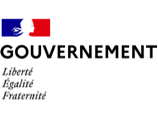Digital healthcare in Germany
Key figures
84M
inhabitants in 2025
3rd
global MedTech player
12,6%
Current healthcare expenditure relative to GDP
Shared competences in health system governance: the division of roles between the Federal government, the Länder, and professional organisations
The healthcare system in Germany is based on a shared responsibility between the federal government and the federated states (Länder). The federal government is responsible for drafting laws, regulations, and administrative provisions that shape the insurance system. The Länder are in charge of hospital planning and provide capital investments for inpatient facilities.
Germany offers universal health coverage through two main systems: statutory health insurance (SHI, German: Gesetzliche Krankenversicherung, GKV), which covers about 90% of the population, and private health insurance (PHI). Insurances are directly billed by doctors, not patients. These insurance funds also contract with various healthcare providers and play a key role in shaping the system, including defining the SHI benefit catalogue.
Meeting the ambassadors

Matthias Mieves, Member of the German Parliament (Bundestag)
Germany has the third-largest industry in terms of medical technology after the United States and Japan
Germany is one of the pioneering countries for early access to reimbursement for digital therapeutics (DTx). The innovative "fast-track" procedure allows healthcare professionals to prescribe certain categories of digital health applications identified as "DiGA" (Digitale Gesundheitsanwendungen), pending evidence of a positive healthcare effect and other product qualities.
Assessing whether these applications qualify for market access is a task assigned to the Federal Institute for Drugs and Medical Devices(BfArM).
Germany is also accelerating its policy of tracking patients between healthcare providers using online records.
Since April 29, 2025, the electronic medical record "ePA für alle" has been generalised across Germany, and deployed by practitioners, hospitals, and pharmacies. It concerns nearly 70 million citizens in Germany in March 2025. Healthcare providers will be required to use ePA starting October 1, 2025. ePA is currently being set up to become the central data access point and provider.
For more information on Germany's "Digitalisation Strategy for Health and Care", click here.
How do you access the German market?
1. Get closer to regional innovation hubs and clusters
Digital Health in Germany features a system of innovation hubs that bring developers together and facilitate the incubation of new healthcare technologies.
The federal de:hub Initiative for "Digital ecosystems" lists several German digital innovation hubs. The digital health hubs are :
- Zollhof, Nürnberg hub: Specialising in the development of business models for eHealth, connected objects and artificial intelligence
- 5-HT,Mannheim/Ludwigshafen hub: Specialising in the digital transformation of the German healthcare system
- Medical Valley, Erlangen hub: Specialising in the development of innovations to meet the challenges of today and tomorrow. It provides its Medical Valley GmbH platform, which markets the products of its companies and offers advice to help them access the German market. It also offers the Dmac (Digital Medical Application Center) which supports innovators in the development of their projects.
Other health-related hubs also exist in different cities :
- Life Science Nord. In the regions of Hamburg and Schleswig-Holstein, this cluster offers startups services, networking opportunities, and support for companies in the fields of digital health, Medtech or pharma.
- DHCH, Hannover. This network of local healthcare industry players connects many public and private stakeholders and coordinates projects in a fast-growing industry.
- Health Navigator Cologne. It is the regional hub for digital health innovation in the Cologne/Bonn metropolitan area. Backed by KölnBusiness, the Health Region Cologne-Bonn, and local universities, it connects digital health startups, SMEs, research institutions, clinics, investors, and industry partners to foster collaborative innovation.
- Cluster Gesundheitswirtschaft Berlin-Brandenburg : Regional innovation hub driving digital health transformation across the German capital region. As one of Europe’s most attractive life science clusters, it brings together over 670 companies in biotech, medtech, and pharmaceuticals, alongside 140 hospitals and major research institutions. It is supported by incubators, accelerators, and public-private partnerships—including Bayer Grants4Apps, Pfizer Healthcare Hub, and Startupbootcamp.
2. Obtain reimbursement from health insurance funds
The preconditions for this gateway to the German market remain the compulsory possession of the CE marking, which is all a product needs to be released in Germany, and the declaration of the release of a medical device to the BfArM, in order to receive reimbursement.
However, the German insurance system is decentralised : there are 95 public and 42 private health insurance funds. The two funds with the largest number of insured are TK and Barmer. The health insurance companies choose which products they agree to reimburse in addition to those that have been approved by the BfArM. They often have their own innovation hubs. This is the case of the TK innovation portal, which offers support for innovation.
3. If your product is a digital health application : undergo scientific evaluation to qualify for inclusion in the DiGA directory
To qualify for inclusion in the DiGA directory (the official list of reimbursable digital health applications), a digital medical device must undergo a scientific evaluation by BfArM. This process assesses the interoperability, data protection, usability, and most importantly, the positive healthcare effects of the application.
Manufacturers have to submit either:
- A clinical study (e.g., RCT or comparable real-world data) demonstrating the app’s positive effect on care, or
- A scientific evaluation plan, validated by an independent institute, if requesting temporary listing (while waiting on the results of the clinical study)
This scientific evidence is critical for approval as part of the accelerated procedure, and BfArM's evaluation period is limited to 3 months after a complete application has been received. If successful, the app may be granted temporary or permanent admission into the DiGA directory. Temporary admission allows up to 12 months (extendable to 24) for study completion.
4. Obtain BfArM listing and national reimbursement
BfArM is the federal authority responsible for health technology assessment of digital medical devices. It issues permits for the marketing of various finished medical products.
To qualify for reimbursement, there must be a clinical study to prove the therapeutic efficacy and cost-effectiveness of the product on the German market. For entrepreneurs developing and marketing e-health applications, BfArM offers a fast-track assessment procedure for sooner market access called DiGA.
To be included in the directory of reimbursable eHealth applications (the DiGA directory), you can follow an accelerated procedure:
- Submit your application here, declare the quality and efficacy of the product and its impact on the German healthcare system
- After the evaluation period, patients will be able to benefit from the DiGA with a prescription or medical proof.
- If the comparative study has not yet been completed, but the other conditions are met, the manufacturer may submit an application for "temporary admission”. He must then: provide an evaluation plan validated by an independent scientific body and conduct the study during a trial period of 12 months (which may extend to 24 months in exceptional cases).
In both cases, once included in the DiGA directory, the e-health application benefits for reimbursement by the GKV (health assurance).
For more information, click here
5. Obtain reimbursement by the statutory health insurance funds (GKV) with the Joint Federal Committee (G-BA)
If your product is not eligible for the accelerated DiGA procedure, you must request reimbursement from the G-BA, which is the traditional route for inclusion in the standard care catalogue. The fast-track application process cannot be successful for a product that has been rejected by the G-BA. The G-BA is a public legal entity comprising the 4 main coordinating organisations of the German autonomous health system:
- The national associations of public health insurance doctors;
- The German Hospital Federation;
- The Federal Central Association of Health Insurance Funds and the national associations of public health insurance dentists
The G-BA defines the specific health care services that are covered by the statutory health insurance (GKV). It is also responsible for funding projects on new forms of health care delivery and research. The G-BA's innovation committee defines the priorities and criteria for funding projects.
Government authorities and platforms
Monitor national digital health strategies, ensure efficient operation and cooperation within the healthcare system
The associations
Federate companies and facilitate their market access
Hubs and innovation clusters
Federate and facilitate the incubation of new digital health technologies
Training courses
Universities and their groups that offer training and support for digital health innovations
Exporting internationally - Why not Germany?


